Pennisetum foxtail
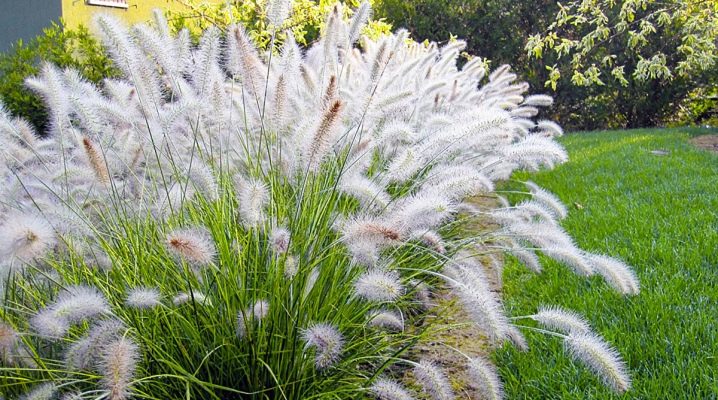
To make a summer cottage look beautiful and attractive, not only fruits and vegetables should grow on it. Gardeners often dilute edible crops with various interesting herbs and flowers. Recently, cereals with a spectacular appearance have also been popular. One of these is the foxtail pennisetum.
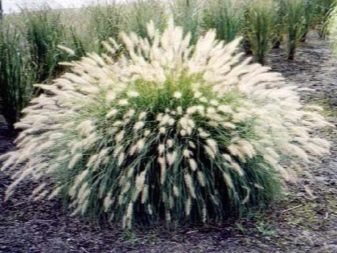
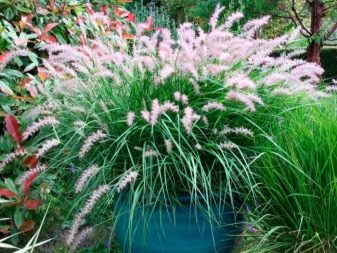
Description
Pennisetum foxtail has another name - fox-tailed pinnacle. The botanical name for the culture in Latin is pennisetum alopecuroides. The plant belongs to the group of perennial cereals. In total, there are more than 150 species of pennisetum in the world, but the foxtail is considered the most popular and interesting. Australia is considered the homeland of the described variety, according to other sources - Asia.
Pennisetum foxtail is grown in garden plots for decorative purposes. The plant often varies in height: the smallest grow up to 30 centimeters, the largest - up to 150. The leaves are long, about half a meter, very narrow, with a sharp end. In spring and summer, they can be green, as well as purple, shimmery purple. In autumn they become sunny.
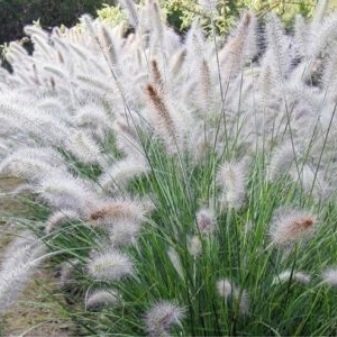
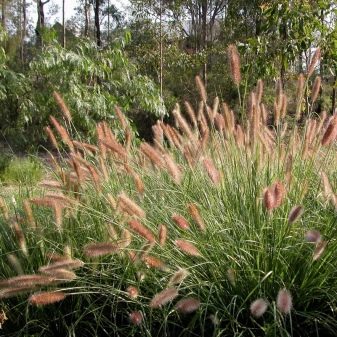
The stems are straight and rough to the touch. At the top of the stem, a fluffy spikelet-panicle is formed, resembling a fox's tail. Spikelets can take on different shades: there are both white with a pink tint, and darker, red ones. In the wind, the plant sways spectacularly, resembling a surface of water.
All varieties of culture look very beautiful, in different ways. One thing unites them - good indicators of winter hardiness. If the area is warmer than -5 degrees, such plants do not even need to be covered.

Varieties
Today there are several varieties of foxtail pinnate bristles. Let's consider briefly the most interesting ones.
- Red head. It is a rather attractive dwarf variety. Belongs to the group of hybrids, has the shape of a regular sphere. Stunted, rarely grows above 30 centimeters. Spikelets in cereal are reddish, with a slight tinge of haze. The leaves are also gray.
- Hameln... Small round bush with a diameter of 0.4 meters. Height - 0.5 meters. The leaves are rich green, turn yellow after cold snaps. Spikelets are white-yellow, quite pleasant to the touch. In autumn they turn red.
- Rubrum... It is one of the tallest varieties of pennisetum, growing up to 150 centimeters. Spikelets grow in groups, go down a little. Painted in pink or reddish tone.
- Maudry... The height of this variety is 1 meter. Its interesting characteristic is spotted foliage. The panicles are dense, can be colored in light or pinkish colors. In autumn they darken, acquire a deep purple undertone.
- Viridescens... Quite an interesting variety with purple foliage. Inflorescences are very dark, almost black, beautifully cast purple. The culture grows up to 0.7 meters.


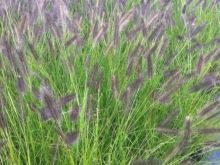
Landing
Pennisetum is best grown with seedlings first. So the culture will receive strong immunity and will grow much faster. It is customary to sow grains in the April period, then in a month the ready-made sprouts can be moved into open ground.
For planting the material, you will need fertile loose soil. It can be made with your own hands from a garden substrate, peat and sandy components. The soil must be baked in the oven. Small containers will be required, since the seedlings of the foxtail pinnate do not tolerate picks.It will grow best in peat cups. The immersion depth of the grains in the substrate is 2-3 mm.
The covering film is removed from the containers after the first shoots appear. The seedlings will need care. These are moderate watering, supplementary illumination with biolights, correct temperature conditions and ventilation. 14 days before disembarkation, seedlings are slowly being taught to outdoor conditions. This process is called hardening.

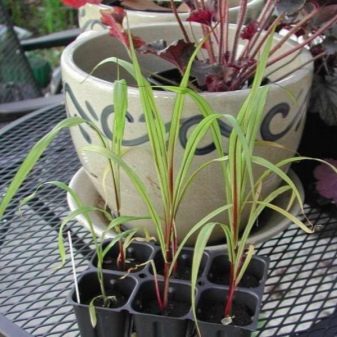
In mid or late May, sprouts can be planted in open ground. The main condition is warmth outside... The soil for plants should be light and loose, not too wet. It is better to make the acidity neutral. The culture does not like dense soils and solid sands. As for the landing site, it should be bathed in the sun.
Plants of the described species are prone to strong growth, therefore the minimum distance between them is 0.5 meters, and even better if it is 0.9 m. The holes for planting should be such that the roots fit freely. After digging the holes, they are well watered with warm liquid. Plants are transplanted together with an earthen clod, otherwise they may not take root. It is necessary to deepen the plants to the same level as before being taken out into the open ground. After planting, the bushes are well watered.
Important: if the growth of plants is not controlled, they are able to spread throughout the area on their own. If this is not in your interests, you need to bury the slate sheets under the landing at a depth of half a meter. This will hold back the growth of culture.

Care
It is not difficult to care for the foxtail pennisetum. It is only important to pay attention to the following mandatory points.
Watering
At first, while the sprout is rooting, it must be well watered, as soon as the soil dries out.... Already adapted shrubs do not need frequent watering. If in the summer it rains at least occasionally, then you can forget about watering. In case of drought, the plants will have to be irrigated weekly. Do this at the root, avoiding drops on the foliage.
It is best to set aside the evening time for watering.

Top dressing
Pennisetum is considered a hardy crop. In the wild, it grows by itself, there is no one there to take care of feeding. But these bushes quickly lose their decorative effect. To prevent this from happening, they are still fed at home. However, this should be done only on infertile, poor in nutrients soils.... If fertilizers were put into the soil in the fall, then they will last for 2-3 years.
In other cases, the pinnate bristles will need fertilization once a month. There are three dressings in total. The first is given in the spring. Mineral complexes are usually taken for it, but it is permissible to use rotted organic matter. In summer, the bushes are fed with compositions for flowering crops containing a lot of potassium and phosphorus. Organic mulch is used in the fall.
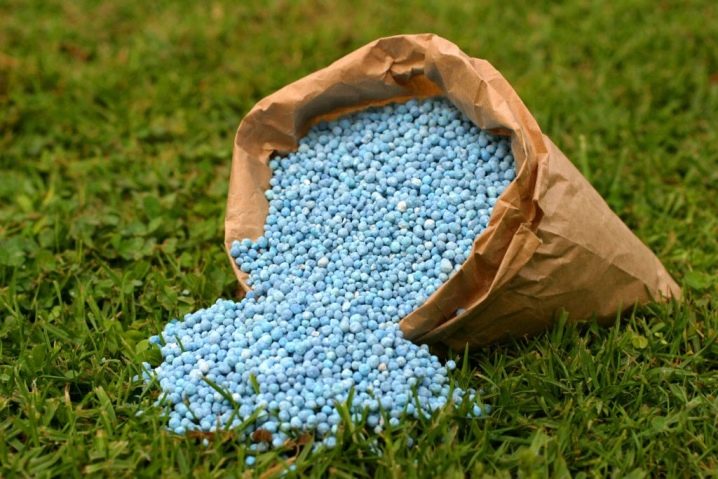
Pruning
The fox-tailed culture does not require pruning, since its beautiful form was already originally laid down by nature. Some summer residents argue that the bush needs to be cut for the winter. This advice should not be heeded. It is not recommended to cut the bush to the ground, since it protects the roots and buds from freezing, does not allow the melting snow to overmoisten the underground part of the plant. In addition, the culture looks very beautiful against the background of snow.
Only diseased, dry and thickening leaves are subject to pruning. You need to cut off the top in the spring, before the start of sap flow.
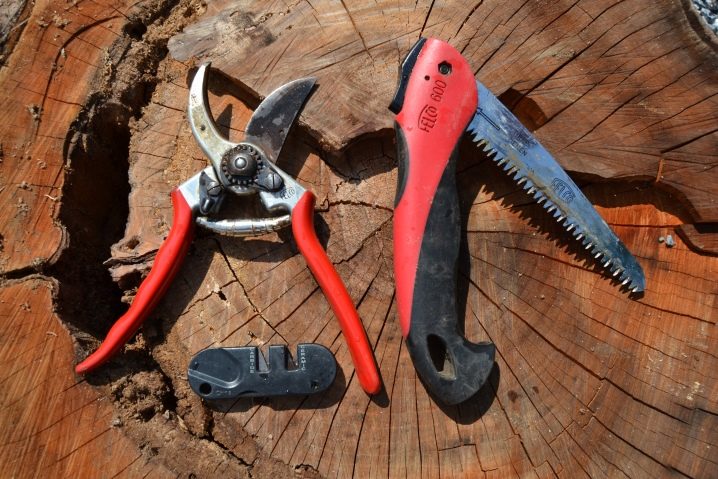
Loosening
Plants of this species really like loose soil, so periodically the soil under the bushes needs to be fluffed up.
An important point is getting rid of the soil from weeds. So that they do not germinate uncontrollably, the soil surface should be mulched. This will also keep the ground moist for longer.

Reproduction
Pennisetum foxtail propagates by seeds or by dividing the bush. We have already described the seed planting method. You can only add to this that the plant is able to reproduce on its own.When the pod bursts, the wind blows the seeds around and out of the area. When propagating by seed for the first time, if you have not previously grown a crop, you can simply buy them at the store. The main thing is to choose a good manufacturer.
The second breeding method is dividing the bush. It must be held once every five years, since by this time the bushes are aging and begin to degenerate. To carry out the procedure correctly, the bush must first be dug with a shovel. This must be done deeply. It doesn't matter if you cut the roots a little while doing this. Having dug in the plant, it is taken out of the soil together with the roots. The earth is shaken off from the roots, then the bush is cut into 4-5 equal parts. The middle area of the root is thrown away, this is already degenerated material. The rest of the parts are buried in the places designated for them, and irrigated with high quality.
All division procedures are carried out in early spring, until the juices begin to actively move.

Wintering
As practice shows, the bushes of the foxtail pennisetum hibernate without problems. The upper part of the bushes is left for the whole winter. Plants are also watered before retirement. Moisture-charging irrigation allows the bushes to tolerate the cold well, the roots are much less injured. Spruce branches or foliage are placed in the trunk circle. If snow is not expected, then the culture should be additionally covered with agrofibre. If strong winds are coming, the bushes need to be tied up.
Important: Pennisetum can winter well only in case of mild winters. In especially harsh areas, it does not take root. There it is grown as an annual.
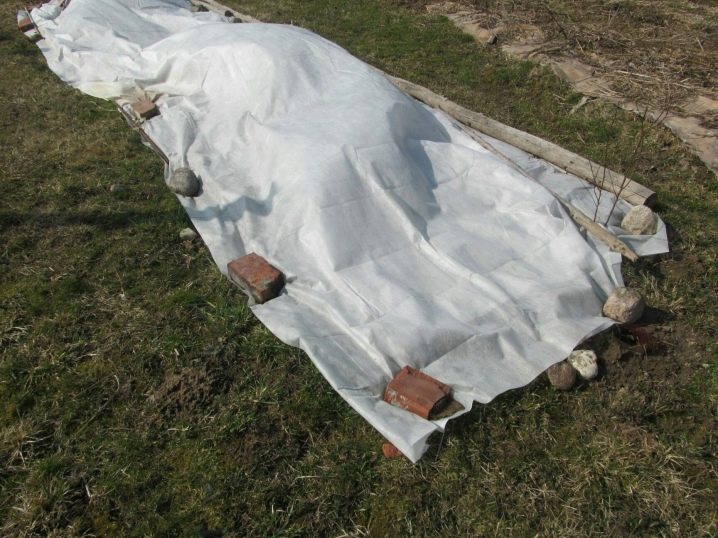
Pennisetum foxtail in landscape design
The described plant is very often used in landscape design of plots, gardens and parks. It does not impose special requirements on the soil, easily tolerates heat and drought, and therefore is so in demand.
Very often, pinnate bristles are grown in large flowerpots. They can be placed, for example, in front of the entrance to the house, on the terrace, in the recreation area. If such bushes grow in open ground, then smaller crops will stand out beautifully against their background. In addition, large plants will become an effective accent of the area that I would like to highlight. They can also form an interesting hedge. This is taken into account even during planting: in this case, it has to be made dense.
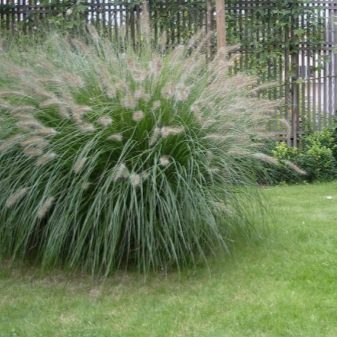
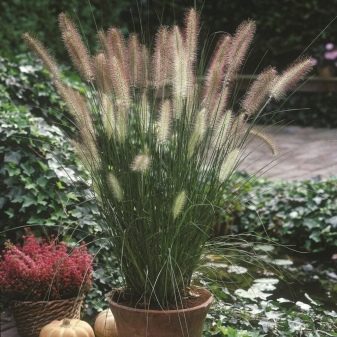
Pennisetum looks very beautiful in rocky compositions. It is planted in flower beds and rockeries next to field grasses. It will be especially beneficial to be close to lavender and other purple plants. In general, any plants of mountains and fields are suitable for this culture.
Also, pinnate bristles are often planted next to water. It frames very thinly small artificial reservoirs.
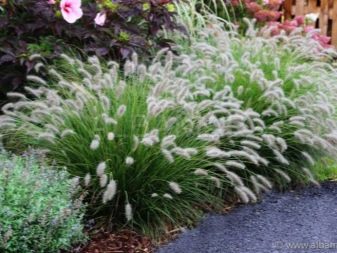
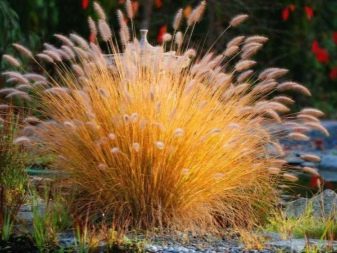













The comment was sent successfully.